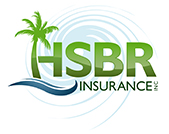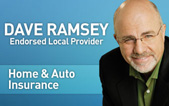 |
|
| |
|
| |
| Your Identity Is Precious: Secure it, Insure it or Lose it |
| |
Chances are you don't want to share your identity with the myriad thieves and con artists lurking on city streets and Internet alleys. Victims of identity theft suffer financially and emotionally, often facing the consequences of this criminal action for years. And it could happen to you.
When your identity is stolen, the thief will pretend to be you and use your personal information to help himself or herself to your bank account or make purchases on your credit card; even worse, he or she can also set up insurance policies, take out loans, and buy a home. All in your name.
To protect yourself against such schemes, start with insurance. Some homeowners policies include identity theft coverage, but most often this coverage is a stand-alone policy or endorsement. Typically, for an additional $25 to $50 per year, you can get coverage
to reimburse you for the cost of restoring your identity and repairing credit reports. While the proper insurance can help if your identity is stolen, you should protect it diligently so you won't need it. Take the following steps:
- Don't discard ATM receipts in public containers or leave them where they could be taken.
- Use caution when shopping online.
- Install and update anti-spyware and antivirus programs on your devices.
- Monitor your bank account activity and credit card statements carefully.
- Check your credit report annually.
- Use strong passwords online.
- Shred documents that contain personal financial information.
- Minimize the personal information you carry with you in your wallet or purse
|
|
|
|
|
| |
| Ensure You Get the Most from Your Health Plan |
| |
Every year, Americans are faced with budgeting for expected health care costs. Here's how to ensure you get the most from your health coverage:
- Review the explanation of benefits (EOB), which describes the treatments and/or services the insurer paid on your behalf. You can review the EOB online soon after each visit.
- Know your deductible - the amount you must pay before your plan kicks in. It usually starts on January 1 of each new year. If you've selected a large deductible, it may take time to reach that point, but be sure your provider still submits the treatment on your behalf. Mistakes happen, and not applying every visit and treatment toward your deductible can cost you.
- The out-of-pocket limit caps the amount you pay per calendar year for your share of covered costs. It's critical your insurer apply all your medical costs, with the exception of uncovered services, to that limit.
- Your co-pay is the set dollar amount you pay the provider when you receive treatment, such as $25 for your primary care physician (PCP) and $50 for a specialist. To control costs, ensure you see your PCP first unless you need emergency treatment. If possible, visit urgent care centers, which have lower co-pays than ERs.
- Coinsurance is your share of a covered service and ranges from 70 to 90 percent. The allowed amount is the reduced rate the insurer pays your provider. For example, if the provider bills $800, and the insurer's agreement allows $170, you owe the percentage of coinsurance on $170, not $800. If your provider is out-of-network, you pay the difference between the allowed amount your insurer pays and the balance. Once you've reached your deductible, coinsurance no longer applies; co-pays continue.
Ensure you get the most from your plan by monitoring it regularly. And contact your agent if you have questions. |
|
| |
| Forget Cleaning Marathons: Divvy Up Your Tasks |
 |
A home that is always squeaky clean and organized is everyone's dream. But sadly, when you do find the time to tidy and scrub, the mess seems to come back within 24 hours. Experts say the trick is not to do a big cleaning every few months, but to divide and conquer. Do some tasks daily, some weekly, and some monthly.
Here's how, courtesy of RISmedia.com and TidyMom.net:
Once a day
Make the beds in the morning. Sweep the kitchen after dinner. Wipe down kitchen and bathroom counters. Before bed, the whole family should do a quick survey of their bedrooms and the living areas, and put their own items back.
Once a week
Once a week, give your house a wipe-down: dust surfaces, clean mirrors, and wipe cabinets and the fronts and handles of appliances. Scrub the toilet bowl and clean the shower walls with a squeegee. Vacuum and mop all
floors.
Once a month
Once a month, set aside time for a thorough cleaning. Wipe the tops of shelves, baseboards, etc. Clean out the fridge and freezer; check expiration dates on items and throw away anything moldy. Vacuum upholstered items and turn mattresses over.
Once a year
TidyMom.net suggests you assign yearly chores to certain months. For example, this month (April) wash windows both inside and out. In January, clean out medicine cabinets and check medicines'
expiration dates. Clean hard-to-reach spots (like behind heavy sofas and appliances) in February. In August, sort through drawers and closets. Wash your walls in September. And before each new year, go through all your personal files, sorting and organizing receipts and tax forms.
While this may sound just a bit too organized, consider the alternative. With this checklist, you'll have a more pleasant and healthier environment for you and your family. And there's a bonus: getting the kids involved teaches them some good life lessons for the future. |
|
| |
| Going Green? Don't Forget to Check Your Insurance Coverage |
| |
Increasing numbers of businesses are striving to reduce the size of their carbon footprint. While these efforts to go green save valuable resources in the long run, their initial setup can be costly.
For example, under traditional commercial insurance coverage, replacing or repairing old equipment with more environmentally friendly parts is not fully covered. Reimbursement is based on the value of the original equipment, which is typically lower than that of its green counterparts.
However, in response to these growing green needs, many insurers are now offering green endorsements that businesses can add to commercial property policies.
Green materials and equipment endorsements cover the higher cost of environmentally certified materials and equipment. It includes coverage for the
difference in cost if your previous equipment was not green certified. If you must rebuild, the policy can also allow you to elevate your building to green certification status.
Green construction endorsements cover all miscellaneous costs involved with green construction, including design, engineering, certification fees, and recycling. Additionally, some insurers offer discounts for hybrid and electric cars if used for commercial purposes.
Some aspects of going green may require business owners to increase their coverages. For example, because green construction typically takes longer than traditional construction, business owners may want to extend their business interruption coverage.
They may also wish to increase overall property coverage if new environmental features are added. |
| |
|
|
|
| |

| |
HSBR Insurance
9055 SE Bridge Road
Hobe Sound, FL 33455
772-546-7292 |
| |
| www.hsbrinsurance.com |
| |
| info@hsbrinsurance.com |
| |
 |
| |
| Now We Can Serve You Better With Our Mobile App! |
|
|
Gather claim information when the claim happens, request and store ID cards, start policy changes and contact us with the tap of a button.
Click one of these links:
Apple iPad
Apple iPhone
Android
|
|
|
| Access your policy 24/7 with our new online portal. Just click the button below. |
| |
 |
| |
| Join us on social media |
| |
|
|
| |
|
|
|
| Are You Making a Mistake with Your Homeowners Insurance? |
|
Buying a home is the biggest investment you'll ever make. With that kind of commitment, you owe it to yourself to protect it.
Before you make a decision on which policy to buy, it pays to be informed. Get up to speed by requesting my free guide, "What You Need to Know Before Buying Homeowners Insurance." |
|
| Just reply to this email and I'll send it right out to you. |
|
 %SOCIALSHARE-GPLUS% %SOCIALSHARE-GPLUS%  |
|
| Click here to forward this email to a friend |
|
| Click here to see a web copy of this newsletter |
|
|
| Quick Quiz |
| |
Each month I'll give you a new question.
Just reply to this email for the answer.
Kale chips can be a nutritious substitute for what snack? |
| |
|
| Recipe: Spring Shaved Asparagus Salad |
|
| Serves 4 |
| |
| To make this a light main dish, add shredded chicken, sliced steak, or marinated tofu. |
|
|
|
|
|
|
|
| • |
|
1 tablespoon sherry vinegar |
|
| • |
|
2 teaspoons Dijon mustard |
|
|
|
| • |
|
1 small shallot, finely minced |
|
| • |
|
1 pound asparagus, woody ends snapped off |
|
|
|
| • |
|
1/2 cup toasted, chopped pecans |
|
| • |
|
1/4 cup crumbled Gorgonzola cheese |
|
|
| Directions |
|
Whisk together the honey, olive oil, vinegar, mustard, water, and shallots in a medium bowl and season with salt and pepper. Set aside.
Once asparagus is trimmed and cleaned, use a vegetable peeler to shave off slices of the asparagus, working from the tip to the end of the stalk. Place in a serving bowl. Cut radishes in half then slice into half-moons and add to the bowl with asparagus. Toss with dressing and pecans and top with the cheese to serve. |
|
|
| |
|
|
|
|
|
|
 |
|
|
This newsletter and any information contained herein are intended for general informational purposes only and should not be construed as legal, financial or medical advice. The publisher takes great efforts to ensure the accuracy of information contained in this newsletter. However, we will not be responsible at any time for any errors or omissions or any damages, howsoever caused, that result from its use. Seek competent professional advice and/or legal counsel with respect to any matter discussed or published in this newsletter. This newsletter is not intended to solicit properties currently for sale. |
|
|
|
- - - - - - - - - - - - - - - - - - - - - - - - - - - - - - -
|